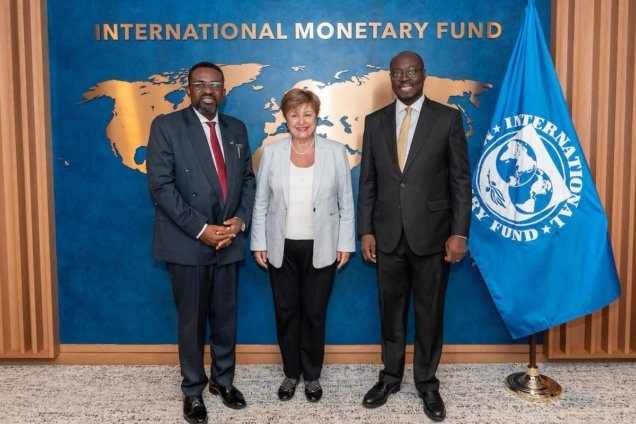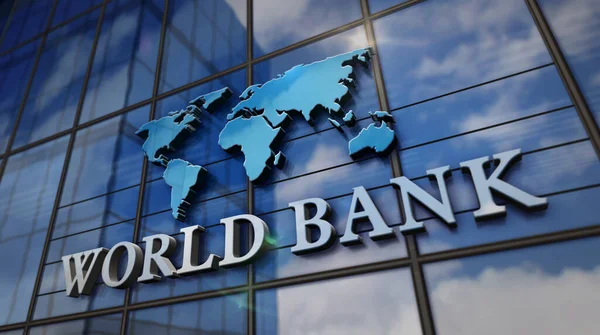Ghana’s economic recovery continues to gather momentum as the World Bank has revised its end-year growth projection upward to 4.3%, from an earlier forecast of 3.9%.
The revised projection, contained in the October 2025 edition of Africa’s Pulse Report, reflects renewed investor confidence, a strong services sector, and macroeconomic stability that has begun to take root following years of fiscal consolidation.
The updated forecast is slightly below the 4.4% growth target set by the Government of Ghana in its 2025 Budget, reinforcing optimism that the economy is on course for sustained recovery. The World Bank’s findings indicate that Ghana’s economic growth is expected to strengthen further in the medium term, reaching 4.6% in 2026 and 4.8% in 2027.
The report attributes the upward revision to Ghana’s impressive 6.3% GDP growth recorded in the second quarter of 2025, largely driven by the services sector, which expanded by 9.9%. This sector remains the backbone of the Ghanaian economy, accounting for the largest share of GDP through trade, telecommunications, and financial services.
According to the World Bank, the services sector’s performance underscores the resilience of domestic demand and the steady rebound of key industries such as tourism, digital services, and finance. The report noted that “Ghana’s services sector continues to be a vital growth engine, supported by expanding digital infrastructure and a vibrant entrepreneurial ecosystem.”
Cedi’s Strong Performance and Fiscal Discipline Pay Off
The World Bank also praised Ghana’s fiscal and monetary discipline, which has contributed significantly to the stabilisation of the cedi. The local currency appreciated by over 20% year-to-date in the first eight months of 2025, following a 19% depreciation in 2024.
The Bank attributed the cedi’s strong performance to tight fiscal management, rising export revenues, especially from cocoa and gold, and improved market confidence after the successful completion of Ghana’s debt restructuring process.
However, the report also cautioned that the cedi faced a 14% depreciation between June and early September 2025 due to limited foreign exchange supply and heightened import demand ahead of the festive season. Despite this temporary setback, the overall currency outlook remains stable.
Inflation Moderation Fuels Economic Optimism
Inflation continues to show encouraging signs of moderation. The World Bank projects Ghana’s end-year inflation rate at 15.4%, though this is notably higher than the official rate of 9.4% in September 2025, down sharply from 21.5% a year earlier.
While analysts consider the Bank’s inflation projection conservative, the trend of sustained disinflation provides a positive signal for households and businesses. The World Bank expects inflation to decline further to 9.4% in 2026, aligning with the Bank of Ghana’s medium-term target.
The Bank of Ghana’s Monetary Policy Committee (MPC) has also maintained that inflation will remain in the single-digit range by the end of 2025, supported by prudent monetary policies and improved food supply conditions.

Business Confidence Strengthens Amid Stable Power Supply
Beyond macroeconomic stability, the World Bank report noted a notable improvement in Ghana’s business environment. The Purchasing Managers’ Index (PMI) — a measure of private sector activity — rose from 50.2 in July to 50.8 in August 2025, signaling expansion in business activity.
The report highlighted that new orders and sustained job creation were key drivers of this improvement. “Business optimism remains strong as new sales and orders continue to increase, supported by lower input costs and a stronger cedi,” the report stated.
The World Bank further underscored the importance of a stable power supply to sustain this growth momentum. It recalled that Ghana’s severe power crisis between 2012 and 2016 led to a 12.3% decline in foreign direct investment (FDI) in non-energy sectors. The Bank stressed that competitive energy pricing and reliability of electricity remain essential to attracting new investments and sustaining industrial productivity.
Ghana Exits Debt Distress Classification
A major milestone highlighted in the report is Ghana’s exit from the “debt distress” classification, following significant progress in restructuring its obligations to bilateral and commercial creditors. This development signals renewed confidence among international partners and investors.
However, the Bank warned that refinancing pressures remain, as Ghana faces a US$500 million Eurobond redemption in 2025 (0.7% of GDP), rising to 1.2% in 2026. Despite these looming challenges, Ghana’s debt sustainability outlook is improving, underpinned by stronger growth, fiscal reforms, and external support.
Sub-Saharan Africa’s Outlook Remains Positive
Zooming out to the regional perspective, the World Bank’s Africa’s Pulse Report described Sub-Saharan Africa’s economy as resilient, projecting growth to rise to 3.8% in 2025 from 3.5% in 2024. The improvement, it said, reflects easing inflationary pressures and a modest recovery in investment across the continent.
The number of African countries experiencing double-digit inflation has also dropped sharply — from 23 in October 2022 to just 10 in July 2025 — signaling notable progress in regional price stabilisation.
Nonetheless, the Bank warned that global trade uncertainties, declining investor appetite, and shrinking development finance remain downside risks to Africa’s growth trajectory.
With improving macroeconomic indicators, stable exchange rates, declining inflation, and renewed business confidence, Ghana appears firmly on the road to recovery. The World Bank’s revised forecast not only validates the government’s reform efforts but also signals that Ghana is regaining its place as one of West Africa’s most dynamic economies.
If current trends persist, analysts believe Ghana could surpass its medium-term growth targets, setting the stage for stronger industrialisation, job creation, and inclusive prosperity.
READ ALSO: GSE on Fire! Turnover Jumps 18% as Banking Stocks Power Record Rally



















